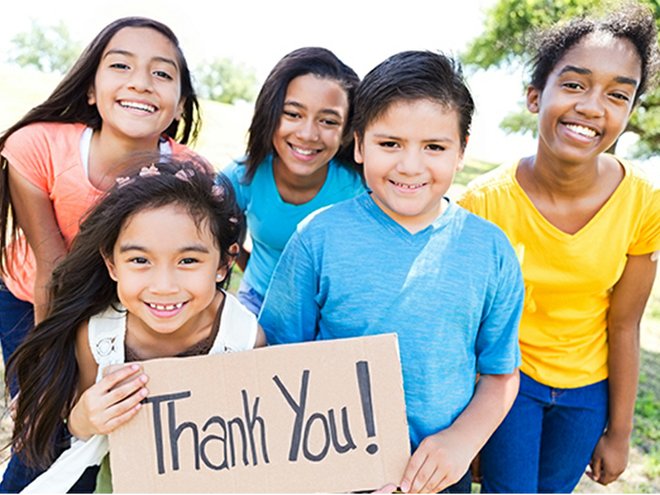5 ways for children to say mahalo.
The Japanese custom of bringing back “omiyage,” or gifts from travels, has turned into a tradition for many Hawai‘i residents. A trip to the Mainland usually means bringing back a suitcase of goodies from Trader Joe’s to share with coworkers and friends. This custom allows us to share a part of our experience with others while showing our gratitude to them for helping out while we were away.
In addition to omiyage, there is much to be grateful for in Hawai‘i and many opportunities for lessons in gratitude for our keiki. The beautiful sunshine gives us the luxury of barbecuing at the beach in the middle of winter and lends itself to more outdoor moments with friends and family.
By practicing gratitude, children and adults learn to be more empathetic, more mindful, less judgmental, and ultimately happier. However, in today’s world of immediate gratification, teaching keiki to feel and express gratitude can be challenging. How do we teach them how to appreciate the little things instead of just the newest iPad or Nintendo Switch?
Finding developmentally appropriate activities to encourage and discuss gratitude can help keiki go beyond the motions of saying “thank you,” to truly understanding what it means to be thankful. Try these exercises to help keiki appreciate more of life’s intangible joys.
Five ways to teach keiki gratitude
- Model the behavior. When children see and hear expressions of gratitude, they are more likely to model that behavior themselves. Explaining why you are bringing back cookies for coworkers can help keiki understand how to show appreciation to others in their own lives.
- Give back together. Finding developmentally appropriate ways to help others in need during the holidays is one way to start conversations about gratitude. For younger kids, this might be in the form of writing thank you letters, but as children get older, volunteering at the food bank or picking out Angel Tree toys for kids in need are good ways to get keiki thinking about what they have that others might not.
- Talk about intention. Instead of talking about the gift itself, discuss the intention and thoughtfulness behind the present. For example, “Grandma got you socks because she wants you to be able to wear your shoes to school every day; isn’t that thoughtful?”
- Practice mindfulness. Take a moment out of each day to talk about gratitude. Go a step further and write down the moments everyone is grateful for and put them in a jar to read later. Try to list simple moments that might otherwise go unnoticed, like “the pleasant sweet aroma of teriyaki burgers cooking at Ala Moana Beach Park.”
- Enjoy being together. Discuss how time together is a gift that some families don’t get to experience. Conversations may turn to military ohana who don’t get to spend the holidays together, or others who may have to work two jobs and can’t be home together on Christmas. By having these conversations, keiki may start to become more appreciative of the most important things in life.
Silvia Sharrar is the assistant director for Early Head Start and Head Start programs at Parents And Children Together, a Hawai‘i nonprofit providing early childhood education and social services to nurture relationships that matter most for local children and families. For more information, visit ParentsAndChildrenTogether.org.
Parents And Children Together is partnering with HONOLULU Family in a series of articles on creating safe and promising futures for Hawaii’s children and families.


